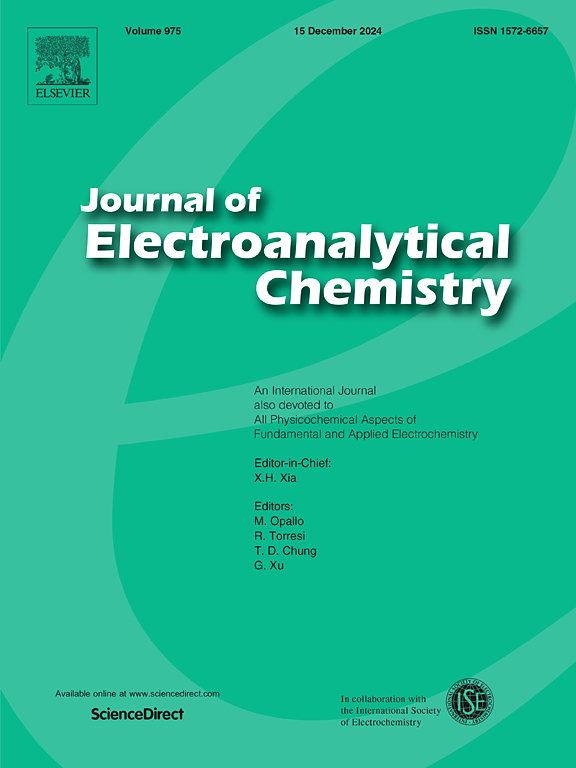Phase-engineered molybdenum carbide embedded in nitrogen-doped carbon nanofiber composites for enhanced hydrogen evolution
IF 4.1
3区 化学
Q1 CHEMISTRY, ANALYTICAL
引用次数: 0
Abstract
Herein, heterostructured Mo2C-MoC nanoparticles embedded in nitrogen-doped carbon nanofibers (Mo2C-MoC/NCNF) were synthesized via a facile electrospinning and annealing process. This method enables the straightforward fabrication of one-dimensional catalysts while allowing phase control of molybdenum carbide by simply adjusting the annealing temperature. The resulting Mo2C-MoC/NCNF exhibits excellent HER performance in 1 M KOH, with low overpotentials of 106.8 and 169.1 mV at current densities of 10 and 50 mA cm−2, respectively, along with outstanding stability over 24 h. The enhanced HER activity is attributed to the synergistic effect between the heterostructured Mo2C-MoC, which serves as an active site by modulating hydrogen binding energy, and the NCNF, which provides a large surface area and high electrical conductivity.

相工程碳化钼嵌入氮掺杂碳纳米纤维复合材料中以增强析氢
本文通过静电纺丝和退火工艺合成了嵌入氮掺杂碳纳米纤维(Mo2C-MoC/NCNF)的异质结构Mo2C-MoC纳米颗粒。这种方法可以直接制造一维催化剂,同时通过简单地调整退火温度来控制碳化钼的相。得到的Mo2C-MoC/NCNF在1 M KOH条件下表现出优异的HER性能,在电流密度为10和50 mA cm−2时的过电位分别为106.8和169.1 mV,并且在24 h内具有出色的稳定性。HER活性的增强是由于异质结构Mo2C-MoC通过调节氢结合能作为活性位点,而NCNF提供了大表面积和高导电性。
本文章由计算机程序翻译,如有差异,请以英文原文为准。
求助全文
约1分钟内获得全文
求助全文
来源期刊
CiteScore
7.80
自引率
6.70%
发文量
912
审稿时长
2.4 months
期刊介绍:
The Journal of Electroanalytical Chemistry is the foremost international journal devoted to the interdisciplinary subject of electrochemistry in all its aspects, theoretical as well as applied.
Electrochemistry is a wide ranging area that is in a state of continuous evolution. Rather than compiling a long list of topics covered by the Journal, the editors would like to draw particular attention to the key issues of novelty, topicality and quality. Papers should present new and interesting electrochemical science in a way that is accessible to the reader. The presentation and discussion should be at a level that is consistent with the international status of the Journal. Reports describing the application of well-established techniques to problems that are essentially technical will not be accepted. Similarly, papers that report observations but fail to provide adequate interpretation will be rejected by the Editors. Papers dealing with technical electrochemistry should be submitted to other specialist journals unless the authors can show that their work provides substantially new insights into electrochemical processes.

 求助内容:
求助内容: 应助结果提醒方式:
应助结果提醒方式:


